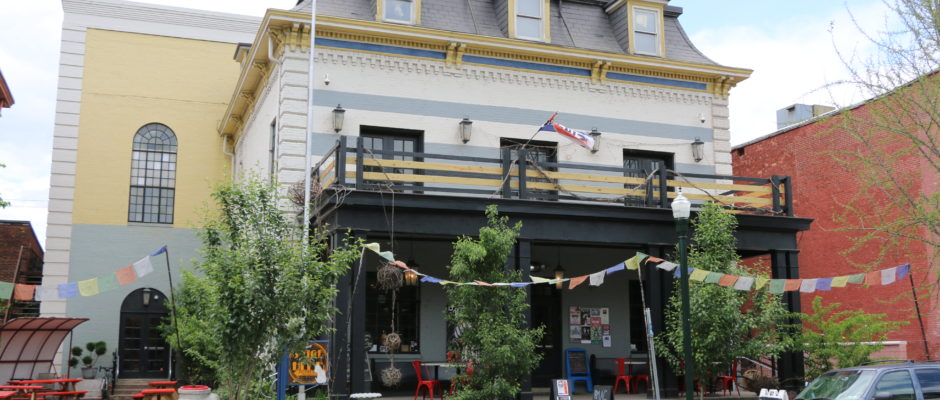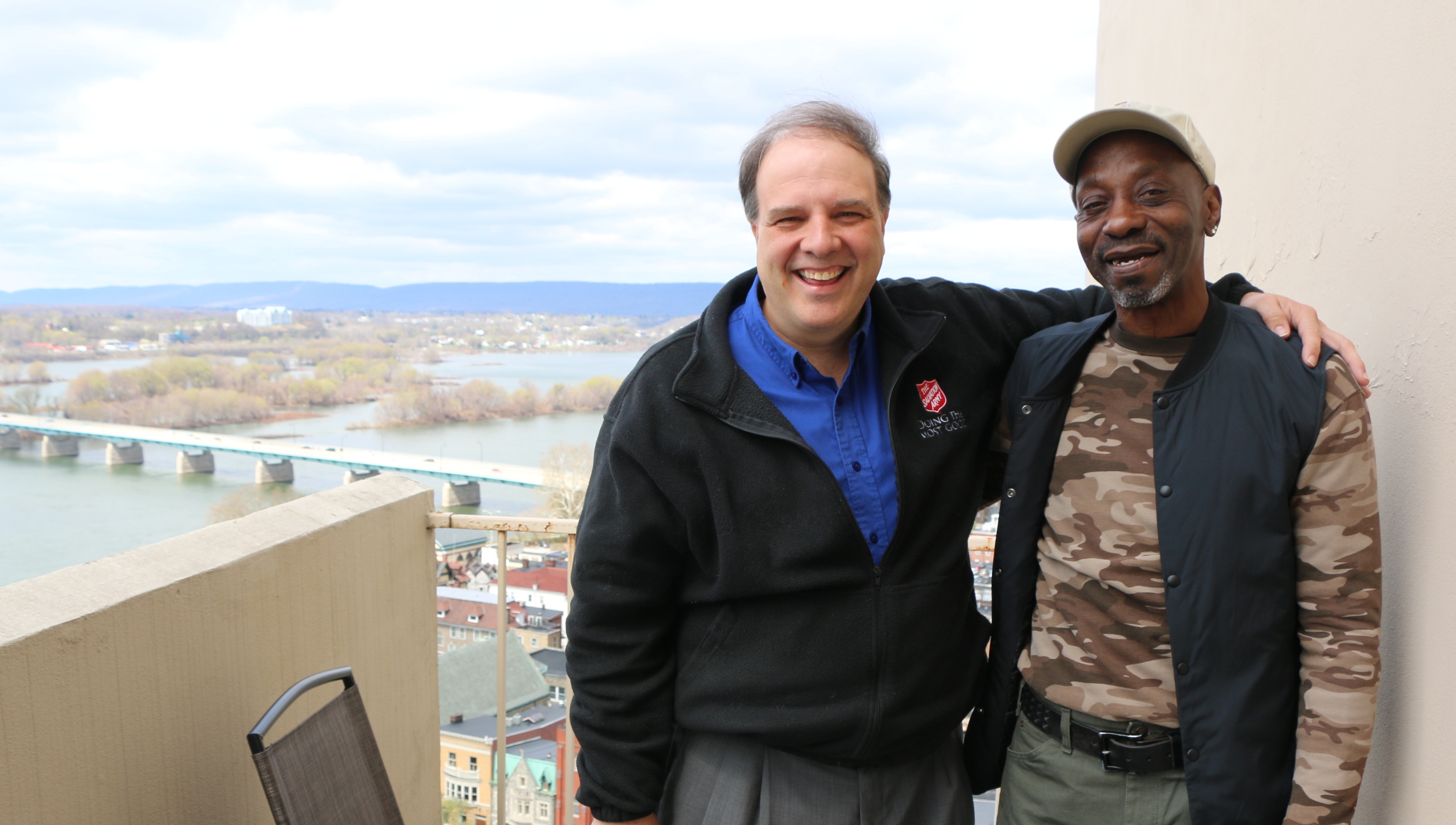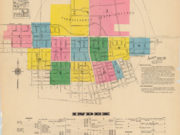In Pennsylvania, Harrisburg is often known more as an symbol than a destination. As a result of the acrimony and intransigence that is the norm in the legislature, Pennsylvanians are apt to forget that this mid-state municipality is more than just the state capital. But for those willing to look past their preconceptions, there’s a compact city with considerable charms. Its population is even growing again, if slowly.
The Midtown neighborhood is often cited as an emblem of the city’s rebirth. But this small corner of Harrisburg has actually been drawing in young professionals, artists and historic preservation fanatics since at least the 1970s. In recent years, the number of entertainment and culinary options has expanded greatly, while the boundaries of the neighborhood have pushed outwards.
Midtown’s strength is built both on its proximity to the capitol and the fact that it didn’t have that far to bounce back. Although there are a few tracts that have been marred by vacancy and blight, the neighborhood’s stock of historic 19th and early 20th century rowhomes remain intact. Due to the waves of new residents — many of whom work at the adjacent state capitol building and its annexes — Midtown’s housing stock has experienced a steady stream of investment.
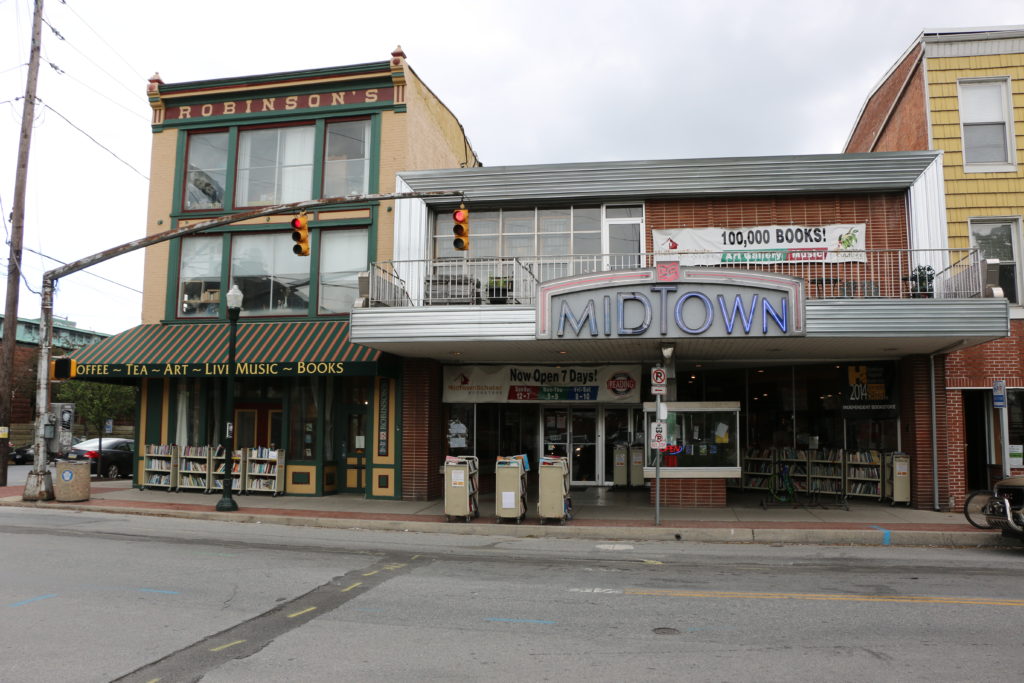
“A lot of things have always made Midtown attractive,” says David Morrison, acting executive director of Historic Harrisburg. “There’s a constant feeder for row houses and apartments. The same demographic stays in the city because of a state job, probably because they aren’t raising kids, and because they like the urban environment.”
Morrison first moved to the neighborhood from the Philadelphia area in 1979, choosing it for that exact reason: It allowed a short walk to the capital building where he worked. But proximity to the seat of government wasn’t always an unmitigated boon for Midtown. After the Second World War, the growth of state bureaucracy picked up speed. The cyclopean civic buildings favored at the time began to sprout north of Forster Street, the wide six lane roadway that separates the capital annex from Midtown.
It is around this time that the area became known as Midtown. In an earlier period, when Harrisburg was smaller, it was actually the northernmost neighborhood and called “Uptown.” The current moniker was popularized by the Midtown Square Action Council, a neighborhood advocacy group that formed in 1977 to protect the interests of the community. Businesses like Midtown Paint and Hardware, and the Midtown Tavern adopted the name thereafter.
“I would say the revitalization became quite pronounced in the 1980s and has been steady ever since,” says Morrison. “But it isn’t something that was so sensational. There was always a lot here to be preserved and maintained, so it wasn’t like bringing back a bombed-out area.”
I anticipate that the neighborhood is going to continue to grow, more people are going to move in, and more of the people who move in are going to stay.Shawn Westhafer, president of the Friends of Midtown
Many of the neighborhood’s problems at the time of Morrison’s arrival stemmed from vacancy. A developer bought up several jazz clubs and retail shops, demolishing them so he would only have to pay tax on the land while he figured out what to do with his purchase. But he never did get around to building, creating a huge vacancy in the heart of the neighborhood next to the Broad Street Market (the longest continually operating indoor market in the United States). With fewer eyes on the street, crime thrived at what had once been a bustling intersection. When the New Fox Ridge townhouses were built on the east side of the street in the 1980s, mixed-use was nixed because developers didn’t believe there was enough retail demand to add shops to the street.
Nonetheless the two Census tracts that comprise the area usually known as Midtown — Forster to Reily, 7th Street to the Susquehanna River — remained among the most densely populated in the city. Between 1980 and 2000, the median income increased, from below $30,000 in today’s dollars to over $40,000. The age of the population fell, with over half of the residents under the age of 35, while the racial composition became more diverse.

In 2000, the northern extremis of the neighborhood was at Reily Street. But then the Midtown Cinema opened in 2001, offering an eclectic variety of both snacks and movies, from Cary Grant classics to best foreign picture contenders at the Oscars. A year later, used bookstore and event space Midtown Scholar opened down the block. Both have become major attractions for regional residents and tourists.
“Midtown wasn’t really a thing then, and this neighborhood pretty much stopped at Reily Street,” recalls Adam Porter, director of the Midtown Cinema. “As I understand it, this building and this organization was started to kind of extend the neighborhood and create a bit of a destination. When the Mayor [Eric Papenfuse, who is also the owner of the Midtown Scholar] cut our ribbon at the grand reopening in 2013, he said they named the bookstore that because the Midtown Cinema was already there. They understood placemaking.”
Soon after, more businesses began to open along the Riley corridor; Harrisburg Area Community College (HACC) also expanded its operations down the block in an effort to be closer to the heart of Harrisburg (the main campus is on the outer fringe of the city). Today the corridor hosts a Vietnamese restaurant, a soul food café and a pizza joint among other non-culinary commercial uses — all in the midst of what was once a sea of vacancy. Though the land where the jazz clubs sat is still empty, Midtown Scholar moved to an abandoned movie theater across the street and is now one of the largest bookstores in the state. It features a well-curated collection of over 200,000 tomes, a coffee bar, sandwich counter and art gallery. In 2015, the Susquehanna Art Museum moved into the stately, newly renovated Keystone Trust bank building down the block.
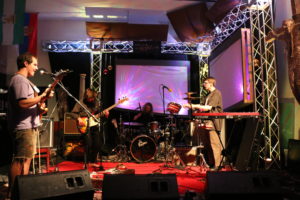
Closer to Forster Road, there are a mix of barber shops, discount clothing outlets, and cash for gold stores, along with newer offerings like the Harrisburg Midtown Arts Center, a gorgeous old mansion converted into a bar, restaurant and show space. A six-story building next to the Historic Harrisburg offices, which sat vacant for decades, is being renovated — now with four apartments per floor instead of the luxurious two per floor (plus servant’s quarters) that were originally intended.
To the northeast, The Millworks opened to much fanfare, boasting a farm-to-table restaurant and beer garden alongside artist studios and galleries. Zeroday Brewing Company replaced a blood donation center run by Rite Aid at the back of the Midtown Cinema building. The nearby Capital Area Greenbelt — a 20-mile recreation loop that passes along the Susquehanna River — draws strollers and bikers to the waterfront, a short walk from the commercial heart of the neighborhood.
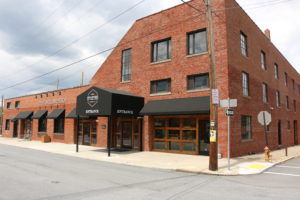
There are still a few stretches of vacant space — notably across from the Susquehanna Art Museum where a down market corner bar is basically the only business open on the street — but even that desolate block will soon be filled in by ModernRugs.com. The Washington, D.C.-area company purchased the old Midtown Paint and Hardware store, and will move its offices and showroom there; they also purchased two other vacant storefronts, which will be transformed into retail uses.
Yet significant challenges remain. The Harrisburg School District is routinely rated one of the worst in the state, with a four-year graduation rate of 38 percent in 2012-2013—nearly 30 points lower than that of the Philadelphia School District. Because the city is immediately surrounded by thriving suburban districts, it’s very easy for parents to pull up stakes, move a couple miles away, and barely add any commuting time to their day.
“I’ve noticed in the past few years that more families are choosing to stay, though not necessarily sending [their kids] to the public school system,” says Shawn Westhafer, president of the Friends of Midtown, a community organization dedicated to the economic and cultural development of the neighborhood. “There are several alternatives. I anticipate that the neighborhood is going to continue to grow, more people are going to move in, and more of the people who move in are going to stay.”
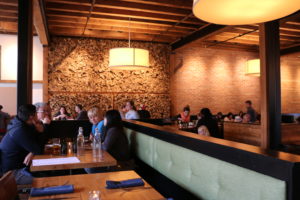
The population of the two Census tracts that comprise the old Midtown (prescribed by the Midtown Square Action Council back in the day) is actually smaller today than it was in 1980, though this can be expected to increase in the coming years as a few dozen new apartments, condos and live-work spaces come online. But the boundaries of what can be considered Midtown have grown considerably according to the new definition embraced by Friends of Midtown: all the way up to Maclay Street — an area three times as large.
This expansion of Midtown raises the question of just how widespread the appetite for city living is in the region. Harrisburg lost population every decade from 1950 to 2000, but in 2010 it experienced a small uptick to 49,528 from 48,950 in 2000. (It peaked at close to 90,000 in 1950.) There has been a larger uptick in the percentage of people between 20 and 34 living in the city, from 22.1 percent to 23.7 percent. That might not sound like much, but it could be meaningful for a region that often loses its talented young people to other cities.
Living more of an urban lifestyle now, you can’t help but run into 10 to 20 people a day — and who knows what may come of that?Adam Porter, Midtown Cinema
Midtown Cinema’s Porter, for one, has great hopes for the neighborhood. He helped found Startup Harrisburg, the first co-working space in town, and reports that he’s seeing more new faces from expensive cities like Washington, D.C. and New York. He grew up in the Harrisburg suburbs, moved into the city over a decade ago, and has lived in Midtown since 2008, just across the street from the movie theater. With a commute measured in yards instead of miles, he dreams of getting rid of his automobile — an ambition that could come to fruition if the rumored arrival of Zipcar occurs.
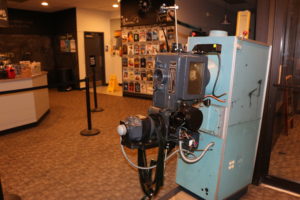
“[In the suburb where I grew up], you knew your most immediate neighbors probably, but there wasn’t much community,” says Porter. “Living more of an urban lifestyle now, you can’t help but run into 10 to 20 people a day — and who knows what may come of that?”
He believes the revival of Midtown could catalyze a larger revitalization of Harrisburg, bringing at least some of the population back from the suburbs. It’s a dream that many civic leaders share, and that looks more realistic today than it has since World War II. The trick, as it is in rebounding cities across the state, will be getting people to stay.
“Just this last weekend I was able to go to the ballet, a house show, and a symphony all in one weekend,” adds Porter. “There is an immense amount of culture here that just didn’t exist 10 or 15 years ago…With enough people working on their little piece of town, I think it’s going to stick this time.”
JAKE BLUMGART is a freelance writer based in Philadelphia. Follow him on twitter @jblumgart.
All photos by James Mentzer.
